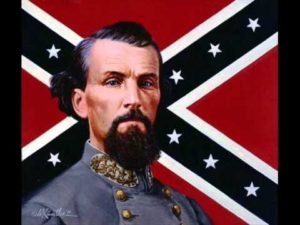Civil War Quiz: What Do You Know About the Post War Era and Reconstruction?
Q#1 – On May 2, 1865, still-president of the Confederacy Jefferson Davis held a Council of War in Abbeville, South Carolina. What was the purpose of this meeting and what was its outcome?
Q#2 – What was the estimated amount of debt incurred by the Southern States by the end of the war?
Q#3 – Southern Negroes were given a promise regarding their ability to own land on former plantations where they had worked as slaves. What was the name of this promise?
Q#4 –What name did President Andrew Johnson give to his post war plan for the nation? He did not call it Reconstruction.
Q#5 – In the years immediately following the Civil War, Southern legislatures began to pass discriminatory laws designed to preserve white supremacy. What were these laws called?
Q#6 – In response to President Andrew Johnson’s pro-Southern bias regarding his plans for treatment of the South specifically as it related to Negroes, Radical Republicans crafted and were successful in getting what amendment added to the US Constitution?
Q#7 – What was the most significant effect of the Reconstruction Act of 1867 passed over President Johnson’s veto?
Q#8 – During the first years of the Reconstruction period, approximately how many US soldiers were stationed in the South to enforce martial law?
Q#9 – What was the name given by the pro-Democratic Party newspapers for the state constitutional conventions held in 1867 throughout the South?
Q#10 – Through the various Reconstructions actions initiated by Radical Republicans to enable blacks to obtain elected political office, what Southern state was the first to elect a black person as Governor during Reconstruction?
Q#10 – How many articles of impeachment were filed against President Andrew Johnson in 1868? What were the three topics that the articles dealt with?
Q#12 – In the presidential election of 1868 won by Ulysses S. Grant, who was the Democratic Party’s candidate?
Q#13 – The Ku Klux Klan is the best known organization that used terror tactics against blacks. What was the name of the News Orleans-based organization that adopted similar terrorist tactics against blacks?
Q#14 – In the Spring of 1871, Congress passed the Enforcement Act in response to growing acts of terror by white supremacist groups in the South. What powers did this Act give President Grant ?
Q#15 – What was the last southern state to be readmitted to the Union?

